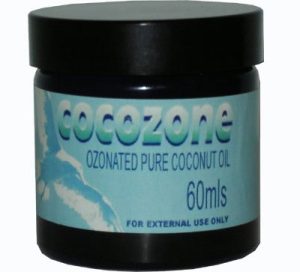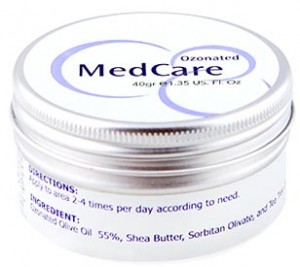Among the thousands of lotions, moisturisers and topical skin creams on the market, ozonated oils stand out. They’re simple, organic products with just two or three ingredients, but they have a list of uses as long as your arm. They have antioxidant properties and they can fight bacterial and fungal infections, protect your skin and help it to heal. This is one of the benefits of using products derived straight from nature: they retain all the good stuff from the plants they came from, so you can use them for a whole host of different remedies.
Ozonated oils begin as natural oils like olive and coconut. The process of ozonation is done by taking pure organic oil, heating it slightly and infusing it with ozone gas over a long period. Though some ozonated oils have only been ozonated for a few hours, we only carry oils that have been ozonated for a period of at least two days for coconut oil or 4-6 months for olive oil.
The point of the ozonation process is that when released from the oil into your skin, ozone becomes a cleansing agent that reacts with anything that shouldn’t be there. Ozone gas (O3) is an unstable molecule, but it doesn’t change while it’s fixed in the oil. Once you apply the oil to your skin, the ozone breaks down into O and O2, and it’s the single oxygen atoms that are so great for your skin.
One of the most exciting things about ozonated oils is their anti-fungal properties. Since we began stocking them, the Finchley Clinic has heard from plenty of satisfied customers who have used ozonated oils to help clean up candida infections. We swear by Cocozone, which is made from organic Sri Lankan coconut oil. Coconut oil is especially good for fighting candida because of its lauric acid content, which can also help to combat ringworm infections, vaginal thrush and athlete’s foot. There has even been a study suggesting that this particular fatty acid has a neutralising effect on chlamydia infections.
Ozonated oils are often used to help with skin inflammations, like dermatitis, eczema, psoriasis and acne. These same properties also help skin that has been damaged by outside forces, like cuts, burns, bee stings and sunburn – even surgical wounds. The antibacterial properties of the ozone help to prevent infection while the oxygen and oil feed your skin. Our ozonated olive oil product, Medcare, also contains shea butter which is packed with vitamins and fatty acids, for soft and healthy skin. Because all the ingredients in our ozonated oils are natural, organic and non-toxic, they can safely be used for babies with nappy rash or even on your pets. The ozonation process turns the oils to a thick paste when done properly, but they melt into liquids when applied, so they don’t cause any unnecessary dragging or irritation to damaged skin. They also feel very pleasant to apply, with a soothing, cooling effect.
Both our ozonatedoils are sold in paste form, and here’s why: liquid oils can only contain a certain percentage of oxygen, roughly 10% in most cases. As a paste, the oil can contain up to 50% ozone as well as releasing it slowly over up to 12 hours for longer-lasting benefits.
Whether you prefer to use coconut or olive oil is entirely up to you. We’ve heard from plenty of people who were satisfied with both. They have their differences: ozonated coconut oil needs to be refrigerated, since if it’s allowed to liquefy it will lose some of its beneficial properties, while ozonated olive oil can be stored in a cupboard. However, coconut oil smells a lot nicer and some find that it simply agrees better with their skin. We recommend you give both a try and see which works better for you. Don’t forget to tell us all about it!
– Experiences of nine years using Ozonized oil in Dermatology. L. Falc6n, D. Sim6n, S. MeneridezI, S. Moya, E. Garbayo, W. Diaz’. Dr. Carlos J. Finlay Military Hospital, Cuba 1987. ‘Ozone Research Center, Cuba.
– Therapeutic Effects of Ozonized Oil in the Treatment of Intractable Fistula and Wound” (2001). Akiyo Matsumoto, Shotaro Sakurai , NarikoShinriki ,Shigeru Suzuki and Toshiaki Miura
– In vitro inactivation of Chlamydia trachomatis by fatty acids and monoglycerides. Bergsson G1, Arnfinnsson J, Karlsson SM, Steingrímsson O, Thormar H.Antimicrob Agents Chemother. 1998 Sep;42(9):2290-4.


